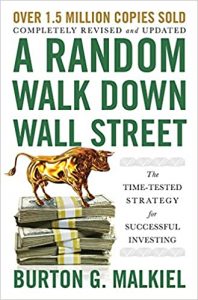Uptick Trade Leave a comment
Contents:

In February 2010, the Securities and Exchange Commission introduced an “alternative uptick rule,” designed to promote market stability and preserve investor confidence during periods of volatility. Specific to the uptick test, the SEC asked if it should adopt a “policies and procedures” approach or a flat prohibition of short selling at a prohibited price. It also solicited comment on whether the penny increment of a price test was sufficient, different increments should apply for different industries and a market maker exemption should extend to the modified uptick rule. For him, the old uptick rule was a useless nuisance that distorted natural market activity.


Bid depth increased, buy-order imbalance declined, and there was a slight increase in spreads. NASDAQ, with less stringent implementation of the rule, presented a different scenario. Short-sale volume and frequency increased for the pilot stocks, but there was no evidence of increased order splitting. Overall, changes in market quality measures were less than on the NYSE. The uptick rule states that you cannot sell a stock short on a down tick.
Q: Why are hedge funds and shorters being blamed?
A stable market need not have the same response, and could better recover from the disturbance. Thus, while the SEC performed a test of certain securities without the uptick rule prior to repealing the regulation, the instability of the market only becomes apparent when it is subject to a significant perturbation which need not have been present during the test. As noted by others, these effects can be amplified during a “bear” market and not revealed in the “bull” market where the tests took place. It is hoped that this will give investors enough time to exit long positions before bearish sentiment potentially spirals out of control, leading them to lose a fortune. The Alternative Uptick Rule effectively reinstates a modified version of the pre-2007 uptick rule, but instead of imposing a permanent market-wide ban or restriction, it acts as a circuit breaker and only applies to short sales effected in the relevant declining security.

In crafting its recent proposal, the SEC heeded those complaints. The old https://forexanalytics.info/ rule required exchanges and brokers to constantly monitor the last sale to make sure the shorts were going off at the appropriate price. That is too difficult in a marketplace that trades across multiple venues at subsecond speeds. Both would be in effect for all securities throughout the trading day. The SEC also threw in three “circuit breaker” proposals that call for restrictions on individual securities if their prices drop by a certain percentage.
Example of a Short Sale restriction
The SEC originally adopted Rule 10a-1 under the Securities Exchange Act of 1934, as amended in 1938 to prevent short selling activity from exacerbating the downward trend of a security. The uptick rule originally was adopted by the SEC in 1934 after the stock market crash of 1929 to 1932 that triggered the Great Depression. At that time, the rule banned any short sale of a stock unless the price was higher than the last trade.
It also enacted a tough new rule aimed at thwarting “naked” short selling. Cox said the decision to ban shorting was made under duress and called it “the biggest mistake” of his tenure in an interview with The Washington Post. He made the statement after reading a report from SEC economists in the Office of Economic Analysis who found that short selling had played no role in the plunging prices prior to the September ban. That’s the sentiment these days in Washington and on Wall Street when it comes to short selling.
Regulatory Data
https://forexhistory.info/r-friendly rules can be more cumbersome from an operational and compliance standpoint. Arbitrageurs are mostly hedge funds and brokerage proprietary trading desks. Arbitrage includes statistical , merger, ETF and capital structure arbitrage. First, the markets were more transparent than they were in the 1930s. So-called “bear raids,” where the shorts conspire to drive a stock to zero, were impossible to perpetrate.
“In any case, we need to preserve the benefits of short selling such as price discovery and exposure of misallocated capital,” says Diether. “As always, the investor expects regulators to help maintain a smooth-running and efficient market. That’s the bottom line.” A currency pair is a price quote of the exchange rate for two different currencies traded in the foreign exchange market. Forex trading is the simultaneous buying of one currency and selling… So, they start shorting the stock from the brokerage firm at a certain fee. Though also remember that short-selling comes with a lot of risk.
Q: Will the ban on short-selling financial stocks work?
Before making an investment decision, you should rely on your own assessment of the person making the trading decisions and the terms of all the legal documentation. The issue is not short selling as such , but the ‘harmonics’ that appear to becoming more prevalent in the stock market such that we get massive highs and massive lows. And unfortunately when those harmonics hit a bank (or any other massively leveraged operation dependent on relatively short-term credit) the outcome is usually fatal. I doubt this would make much difference but it will help transparency.
In February 2010, theSecurities and Exchange Commission introduced an “alternative uptick rule,” designed to promote market stability and preserve investor confidence during periods of volatility. At this point, the exchanges automatically enable these short-sale restrictions. If the bid/ask for XYZ is $10.50 – $10.55, short sales must be executed at a price above $10.50, which is the bid price. This forced the Financial Services Authority to issue a temporary ban on short selling of HBOS shares as the Authority was concerned that this was negatively impacting the share price of the bank . This ban was soon after extended to cover the shares of 29 major financial institutions and a number of other countries like France and Australia followed suit by banning shorting on quoted financial institutions in their respective countries.
- For example, if the stock under SSR is at $10, you can place a sell limit order at $13.
- Portugal, whose popularity has surged over the last few years, particularly among digital nomads and the retirement set, also has seen a notable uptick in tourism during typically off-season months.
- In October 2003, as part of Reg SHO, the SEC proposed replacing the uptick rule with a bid test.
- Taiwan’s Financial Supervisory Commission has prohibited the short selling of Taiwanese shares for less than the previous trading day’s closing price since 24 August.
- If those functions are delayed and misallocation become severe, says Diether, it can lead to slowed growth and even increased unemployment.
The final two proposals are circuit breakers that would trigger the application of the modified uptick rule and a circuit breaker that triggers the application of the traditional uptick rule for the remainder of the day. The alternative rules incorporate the exemptions from the modified uptick rule and the traditional uptick rule, respectively. For about two years starting in May 2005, Diether and his colleagues studied the true effectiveness of the uptick rule by comparing trades in the 1,000 pilot stocks deregulated by the SEC with those that continued trading under the rule. They tracked volatility of price changes and measures of market quality in both NYSE and NASDAQ trading.
It was introduced to prevent short sellers from piling too much pressure on a falling stock price. SSR, also known as uptick rule, is a process aimed at limiting short selling in the stock market. The goal is to prevent short sellers from pushing the shares of a company lower.
Regulatory Contacts
The traditional uptick rule, like the uptick rule contained in former Rule 10a-1 under the Exchange Act, prohibits effecting a short sale at a proscribed price instead of requiring trading centers to establish policies and procedures designed to prevent violative short selling. The prohibition would apply if trades in that security are reported pursuant to an effective national market system plan and information is available on a real-time basis. The traditional uptick rule includes exemptions for short sales that are similar to those included for orders in the modified uptick rule and also includes additional exemptions necessary for a short sale price test based on the last sale price. Uptick describes an increase in the price of a financial instrument since the preceding transaction.
Recent uptick might appease Qt Group Oyj (HEL:QTCOM) institutional owners after losing 33% over the past year – Simply Wall St
Recent uptick might appease Qt Group Oyj (HEL:QTCOM) institutional owners after losing 33% over the past year.
Posted: Thu, 23 Feb 2023 06:48:24 GMT [source]
It’s also believed that the rule may allow overvalued shares to go undetected. One empirical study found no statistically significant link between the uptick rule and the rates of price decline. In addition, the Commission stated its belief that the amendments would bring increased uniformity to short sale regulation, level the playing field for market participants, and remove an opportunity for regulatory arbitrage.
Impose a https://day-trading.info/ sale price test based on the national best bid in a particular security for the remainder of the day if there is a severe decline in price in that security . Such price manipulations undermine market efficiency and thus the inherent reliability and security of markets for investors. Mortgage backed securities may be the disturbance that is being amplified by an unstable market.
- A downtick is when the price of a security moves down by at least 1 cent from its previous trade.
- By using our site and accepting the terms this means you have read and agreed to our Privacy Policy.
- On the other hand if the company announces that they have experienced a sudden, steep decline in trading it is probable that another profit warning could be on the cards ahead in which case it might be best to take a wait and see stance.
- Balances on loan also decreased by around 5 percent follow the rule’s repeal.
- It also enacted a tough new rule aimed at thwarting “naked” short selling.
In theory, this rule is supposed to reduce dramatic bear runs on stocks that are fueled by short sellers. After all, if stocks that are going down never tick back up, short sellers won’t have an opportunity to jump into the game by selling more shares short. The uptick rule is designed to limit aggressive short-selling and to prevent stock manipulation and volatility. 6517 To require the Securities and Exchange Commission to reinstate the uptick rule on short sales of securities. On July 16, 2008, Congressman Gary Ackerman (D-NY), Congresswoman Carolyn Maloney (D-NY) and Congressman Mike Capuano (D-MA) introduced H.R. 6517, “A bill to require the Securities and Exchange Commission to reinstate the uptick rule on short sales of securities.”
